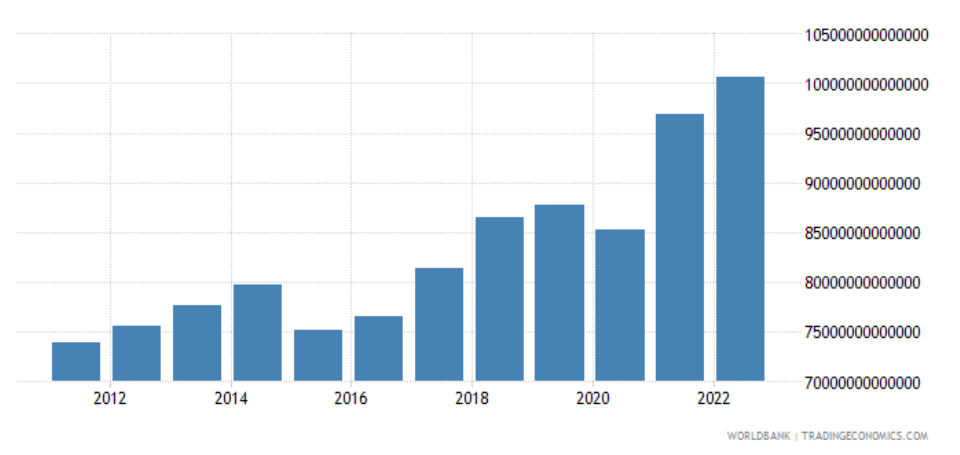
Gross domestic product is the most widely used measure of a nation’s economic performance. GDP measures the total value of products and services generated within a nation’s borders over a year. While it is one of the most frequently employed tools for evaluating an economy’s health, it possesses several drawbacks. GDP is an inadequate indicator of economic performance because it fails to account for various crucial variables, such as income inequality, environmental impact, and societal well-being.
GDP neglects non-economic elements, including social, educational, and health-related aspects, which are essential for gauging overall progress. By primarily focusing on economic productivity and disregarding human capital, social cohesion, and overall quality of life, GDP provides an incomplete picture of progress. (Milanovic, 2016)
READ I Coastal Cargo: Private ports surge ahead in India’s shipping revolution
GDP as a measure of progress
GDP does not consider income disparities (Piketty, 2014). A nation’s GDP growth does not guarantee equitable benefits for all its citizens. In contemporary times, GDP as a true measure of economic success has faced criticism due to the rising income inequality, a concern that has become increasingly relevant in both developed and developing countries (Kapoor and Debroy, 2019). In some nations with strong GDP growth rates, income distribution remains highly uneven. Some economists argue against using GDP as the primary metric for economic success, as it may lead to societal unrest and increased wealth inequality.
Furthermore, GDP fails to account for environmental harm caused by economic expansion (Costanza et al., 2009). A nation can experience substantial GDP growth while simultaneously degrading its environment through deforestation, pollution, and resource depletion. The costs associated with these environmental impacts are not factored into GDP calculations. While an economy may achieve high GDP growth rates by depleting natural resources, this approach is unsustainable in the long term.
World gross domestic product in current $

Alternative frameworks and indicators, such as the Genuine Progress Indicator (GPI), Sustainable Development Goals (SDGs), and the Human Development Index (HDI), have been proposed to address these limitations. These frameworks integrate social, environmental, and well-being factors with economic data to provide a more holistic view of economic success (Anand and Sen, 1997).
Social welfare is another aspect overlooked by GDP (Diener et al., 2010). A nation’s rapid GDP growth can sometimes coincide with a decline in social welfare, marked by regional inequality, lower life expectancy, and inadequate social services. Evaluating an economy must involve an assessment of the quality of life for its citizens, as high GDP growth unaccompanied by improved welfare is an unreliable indicator of economic effectiveness (Initiative B.L., 2011).
GDP growth rates also fail to account for unpaid labor, informal employment, and the shadow economy (Matthews, 1984). Many economies rely on informal labor, which goes unrecorded in GDP calculations. Jobs categorized as “informal work” lack regulation, and earnings from these jobs are not subject to taxes or social security deductions. The GDP does not consider the output of businesses in the informal sector, which can constitute a significant portion of the economy.
Additionally, the GDP underestimates living standards due to the existence of the shadow economy, where economic activities go unreported (Stiglitz, Sen, and Fitoussi, 2009). Wealthy individuals may disproportionately benefit from economic growth in some economies, leaving the poor disadvantaged and leading to social discontent. Neglecting non-market activities like unpaid household labor, volunteer work, and informal sector activities, which have a profound impact on society and well-being, can lead to a lack of understanding of an economy’s true performance.
GDP also overlooks the differences in purchasing power parity (PPP) between nations, which can significantly affect evaluations. The GDP of two nations can differ substantially due to variations in the cost of living, but this disparity does not necessarily indicate that the nation with the lower GDP has a weaker economy. Moreover, the quality of goods and services produced is not considered by GDP.
An economy may raise production to boost GDP, but if the goods and services are of poor quality, it signifies that the economy isn’t making a meaningful contribution to economic growth or societal well-being. Additionally, GDP does not account for technical advancement and innovation, which can have a significant impact on productivity and growth in modern economies.
It is worth noting that higher economic growth does not necessarily equate to higher levels of happiness (Easterlin, 1974). The World Happiness Report 2021 highlights that India’s ranking is the second lowest among its immediate neighbors, despite its higher GDP compared to some of them. This evidence underscores the argument that GDP alone is an unreliable measure of true economic performance.
Furthermore, GDP, as an indicator, excludes non-monetary economic contributions, as it relies solely on financial transactions (Stiglitz, Sen, and Fitoussi, 2009). Activities such as family output, volunteer work, and public expenditures on arts, culture, and education are not considered in GDP calculations. Including these contributions in GDP measurements could provide a more comprehensive understanding of a country’s economic performance.
In the case of India, concerns have been raised about the credibility of GDP figures. The estimation of data assumes that the unorganized sector grows at the same rate as the organized sector, which has not been the case, especially post-demonetization and the pandemic (Arun Kumar). A study by former senior economic adviser Arvind Subramanian also suggests that India’s GDP growth rate has been overstated by approximately 2.5 percentage points each year since 2011.
Recognizing these limitations, alternative measures of economic success have gained prominence. Bhutan, for example, uses Gross National Happiness (GNH) instead of GDP. Other economies, including Finland, Iceland, Scotland, Wales, and New Zealand, have joined the “Wellbeing Economy Governments partnership” to adopt alternative indicators of success. The World Health Organization has also called for well-being to be central to economic success, and the European Union has acknowledged the need for a transition to a well-being economy. These initiatives emphasize the importance of considering a variety of indicators and data to understand progress beyond GDP.
In conclusion, GDP should not be the sole measure of societal progress. It falls short in capturing income inequality, environmental impact, social welfare, non-monetary contributions, quality of goods and services, innovation, and differences in purchasing power parity. While GDP provides valuable economic data, it does not offer a comprehensive view of an economy’s performance. Policymakers and researchers should consider alternative indicators and a more holistic approach to evaluating economic success, focusing on shared, inclusive, sustainable, and green growth, as advocated by numerous prominent economists.
(Aamir Ahmad Teeli is a doctoral fellow at Central University of Tamil Nadu. Firdous Ahmad Malik is Assistant Professor at University of People, Pasadena, California, United States.)
References
Anand, S., & Sen, A. (1997). Poverty and Human Development: Human Development Papers 1997. New York: United Nations Development Programme, 1-20.
Bleys, B. (2005), “Alternative welfare measures”, MOSI Working Paper No. 12, Vrije Universiteit Brussel, Brussels.
Costanza, R., et al. (2009). Beyond GDP: The Need for New Measures of Progress. Solutions, 1(1), 6-9.
Diener, E., et al. (2010). New Well-being Measures: Short Scales to Assess Flourishing and Positive and Negative Feelings. Social Indicators Research, 97(2), 143-156.
Darmstadter, J. (2000), “Greening the GDP – Is It Desirable? Is It Feasible?” The RFF Reader in Environmental and Resource Policy, No. 139, pp. 11-15.
Easterlin, R. A. (1974). Does Economic Growth Improve the Human Lot? Some Empirical Evidence.
Initiative, B. L. (2011). Measuring well-being and progress. Organisation for Economic Co-operation and Development (OECD).
Ivković, A. F. (2016). Limitations of the GDP as a measure of progress and well-being. Econviews-Review of Contemporary Business, Entrepreneurship and Economic Issues, 29(1), 257-272.
Milanovic, B. (2016). Global Inequality: A New Approach for the Age of Globalization. Harvard University Press.
Piketty, T. (2014). Capital in the Twenty-First Century. Harvard University Press.
Stiglitz, J. E., Sen, A., & Fitoussi, J. P. (2009). Report by the commission on the measurement of economic performance and social progress.
Wesselink, B., Bakkes, J., Best, A., Hinterberger, F., ten Brink, P. (2007), “Measurement beyond GDP”, paper presented at Beyond GDP: Measuring progress, true wealth, and the well-being of nations, November 2007, Brussels.
